By Corey Sandler
So where were we? Two partial circumnavigations of the British Isles by luxury cruise ship.
We left off in last month’s blog in Kirkwall, the principal town of the Orkney Islands at the top of Scotland.
Back to the mainland we headed to Belfast, the capital of Northern Ireland, at the northern reaches of Ireland; about 80 percent of that island is within the independent nation of the Republic of Ireland.
Northern Ireland is part of the United Kingdom though nearly evenly split between those who want that association to continue and those who want to join with the Republic of Ireland.
Ask a political scientist and you might hear this sort of description of Northern Ireland’s government: a consociational devolved legislature within a parliamentary constitutional monarchy.
Wazzat?
A sharply divided region with religious factions operating its own legislature, with a limited range of powers that can be overridden by the superior parliament of the United Kingdom.
The good news is that The Troubles of the 1960s and 1970s are mostly gone and relations between Nationalists (those who want to hold on to the link to King and Country) and the Republicans (who want to break away and become part of the Republic of Ireland) are mostly civil.
Belfast, Northern Ireland: Devolved Into Something Close to Peace
Today tourists come to visit the place where the great ship Titanic was constructed between 1909 and 1912. Tour guides cannot resist lame jokes about guests who disembark a handsome new ship to visit a museum devoted to the unsuccessful maiden voyage of another.
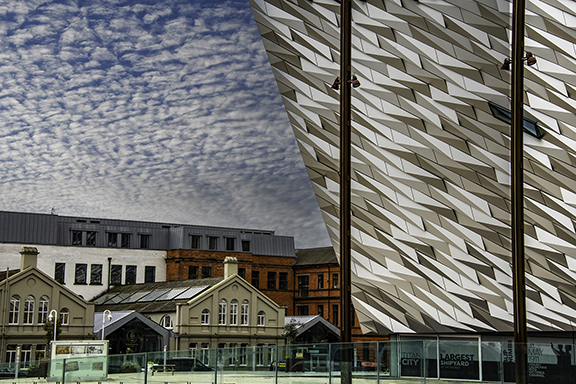

Cruise Ship Up the Mersey: Liverpool, UK
Until the 1960s, Liverpool was not much known outside of the British Empire. It had been a major trading port for cotton, linen, and slaves.
During World War II, its port and factories made it a prime target for German bombers and large parts of the city were leveled.
Out of the ashes, like a phoenix, came music which conquered the world. It was first known as the Mersey Beat, after the River Mersey that runs along the port and out to the sea. And then came The Beatles. It is worth noting that all four of the members of the band were born during the war; John Lennon’s middle name was Winston.
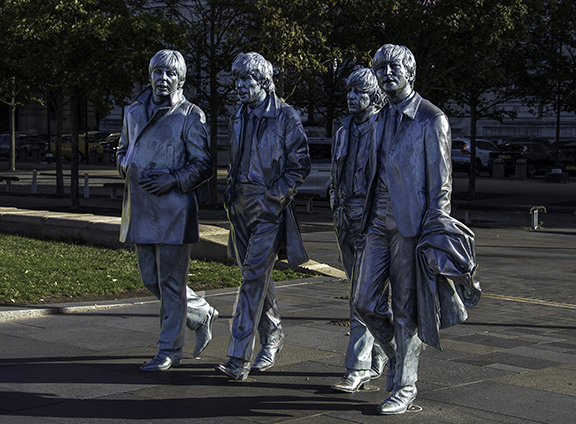
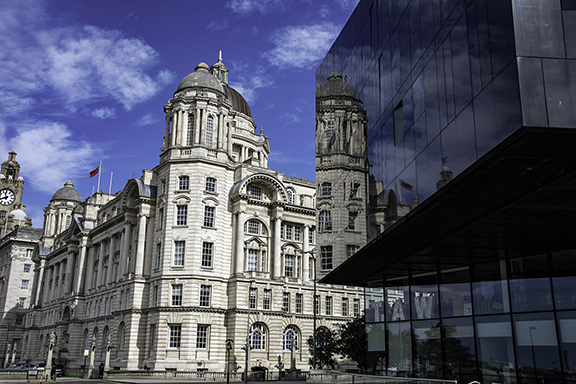
Holyhead, Wales: The Welsh Connection
Holyhead, on the large Isle of Anglesey, is a major Irish Sea port with connections inland to Wales and England and by sea to Ireland and beyond.
Confusingly, its name is pronounced as if it were referring to the “holly” bush although its ancient name meant “holy.” That is by no means the most difficult part of the Welsh language, though.
About 20 miles east, near where Anglesey connects to the mainland of Wales is the village of Llanfairpwllgwyngyllgogerychwyrndrobwllllantysiliogogogoch,
which I’m sure you understand to mean “The church of Mary (Llanfair) of the pool of the white hazels over against the fierce whirlpool and the church of Tysilio of the red cave.”
Instead of revisiting the village–or taking Welsh language lessons–we chose instead to venture to the bucolic village of Beaumaris, home to the substantial and never completed Beaumaris Castle. Work began in 1295 and sputtered to an end in 1330.

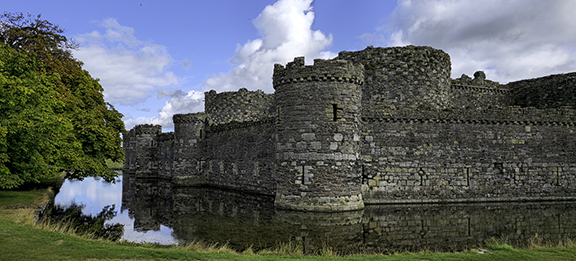
Portsmouth, UK: Nelson’s Last Stand
On one of our cruises a looming storm caused us to divert to the lively port town of Portsmouth on Portsea Island, off the south coast of England in the Solent.
The only city in England not located primarily on the mainland, Portsmouth is 22 miles southeast of Southampton.
Portsmouth’s history dates to Roman times, and as a major Royal Navy dockyard and base for centuries.

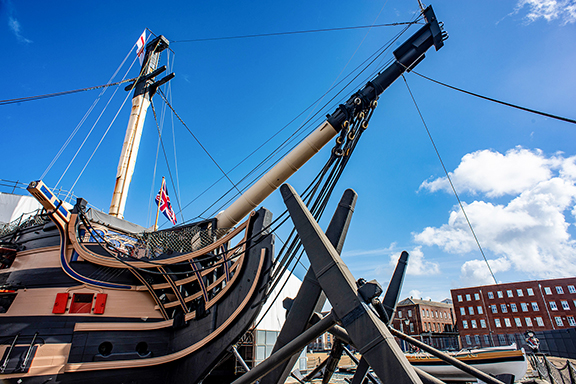
Portland and Weymouth, UK: Home of George III’s Bathing Machine
On our second cruise in this contract, we once again had to divert because of weather and this time ended up in Portland, a small island fronting on the English Channel and tied to the mainland of the UK by a barrier beach called Chesil Beach.
There are two very different aspects to Portland. The southern tip, Portland Bill, is a somewhat wild and desolate place with a substantial lighthouse to warn seafarers of danger.
To the north is the well-known British beach resort of Weymouth, filled out with pubs, fish and chip shops, and an amusement park.
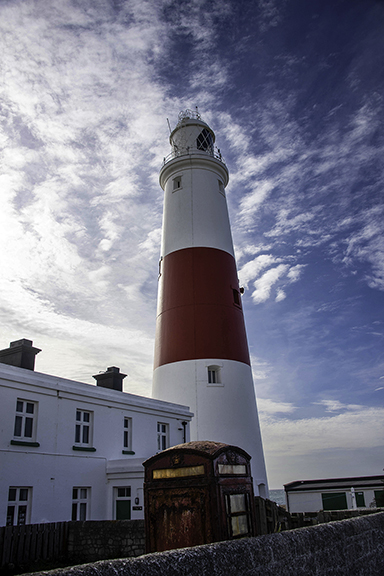
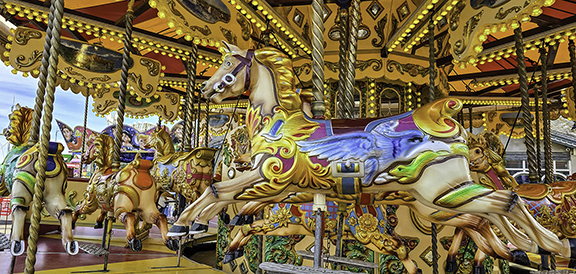
Greenwich (London), UK: We Are Back
The turnaround port for these two cruises, the end of the first and the start of the second, was the Greenwich Ship Tier on the River Thames, about five miles downstream of Tower Bridge.
This is the largest mooring in London, a floating pontoon just offshore of Greenwich. Viking Vela tied up to moorings in the river and we used various ferries from the Thames Clipper fleet to transfer from the ship to the shore.
We came ashore just below the famed Cutty Sark, perched up on the bluff and nearby to the Old Royal Navy College and the Greenwich Observatory.
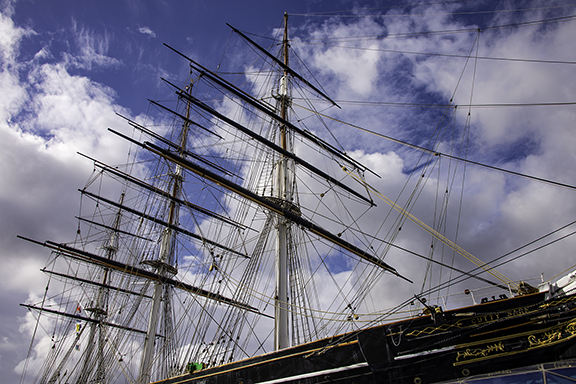

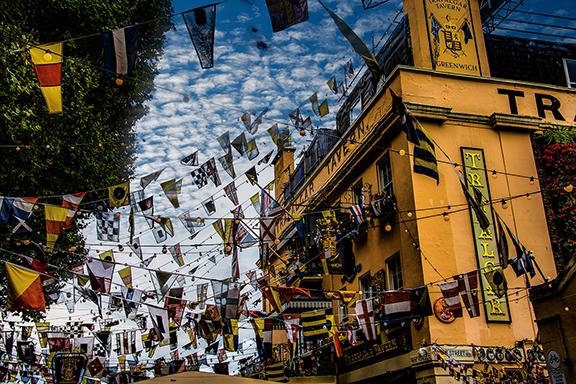
Three days, two nights off. We began this contract in Boston, where the American Revolution was hatched and here we were in London, home of King George III during the uprising.
Why not go see Lin-Manuel Miranda’s superb “Hamilton” in the company of some of the mad king’s descendants?
In the song “What Comes Next?”, George III asks:
“I thought that we’d made an arrangement
“When you went away.
“You were mine to subdue.“Well, even despite our estrangement,
“I’ve got a small query for you:
“What comes next?
“You’ve been freed.
“Do you know how hard it is to lead?“You’re on your own
“Awesome. Wow.
“Do you have a clue what happens now?“Oceans rise,
“Empires fall.
“It’s much harder when it’s all your call.”
Indeed. Now perhaps more than ever.
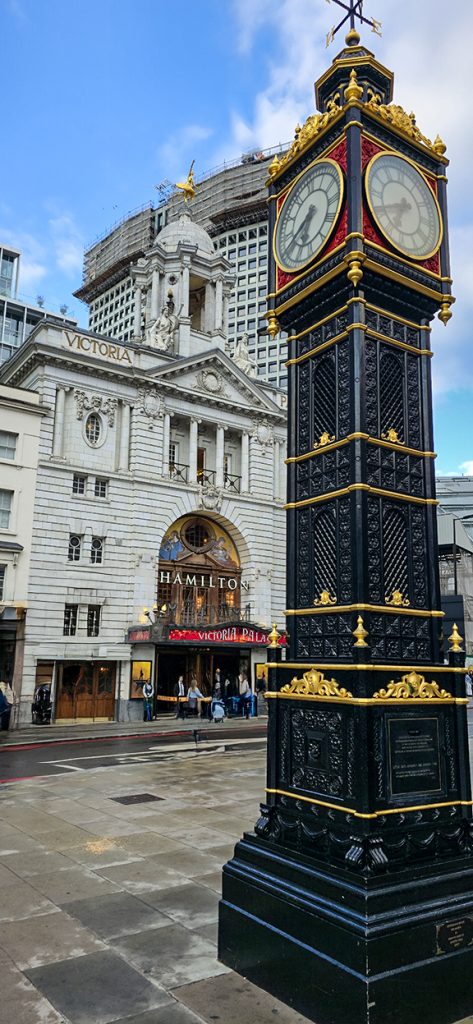
After the show we jumped on the Tube to the Embankment and boarded a Thames Clipper downstream. We passed alongside the London Eye, Westminster, and then through the Tower Bridge.
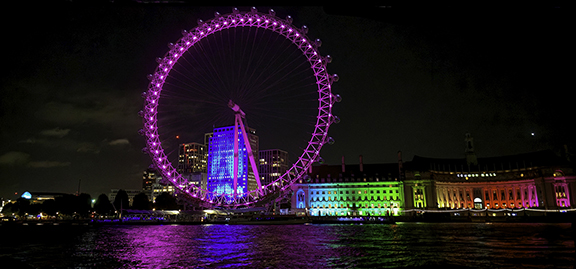
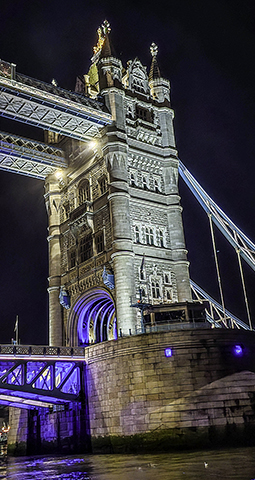
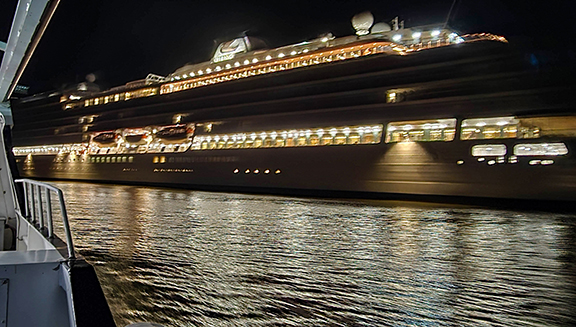
All text and photos are by Corey Sandler, all rights reserved. Copyright 2025. If you want to obtain a copy of one of my photographs for personal or commercial use, please contact me using the link on this page. Or, click here to contact me.
If you’d like to order a copy of my book, “Henry Hudson Dreams and Obsession” you can obtain a Kindle or PDF version by clicking here: HENRY HUDSON DREAMS AND OBSESSION
Or if you would prefer to purchase a printed book in hardcover or paperback (personally autographed if you’d like) please send me an email for details. Click here to contact me.
